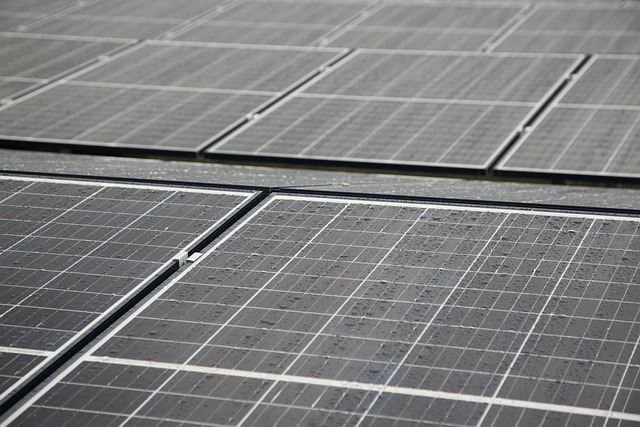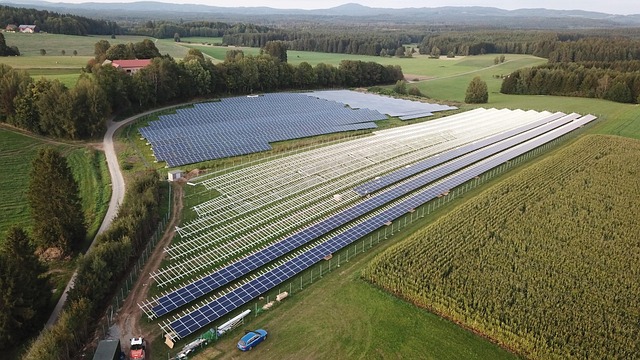The Invisible Force: How Solar Energy Shapes Our Daily Lives
In an age increasingly dominated by environmental concerns and sustainability, solar energy emerges not just as an alternative energy source but as a transformative force in our daily lives. This invisible but potent energy source is at the forefront of a global movement toward a greener future. As we delve into the impact of solar energy, it becomes abundantly clear that its reach extends far beyond the confines of solar panels and photovoltaic cells; it influences our economy, lifestyle, and even our understanding of nature.
The Science Behind Solar Energy
Solar energy is derived from the sun’s radiation. The sun emits a tremendous amount of energy, enough in one hour to power the entire planet for a year. This energy can be harnessed using various technologies, primarily through solar thermal and photovoltaic systems. In solar thermal systems, sunlight is used to heat a fluid, which can then be used to produce steam for electricity generation or direct heating. On the other hand, photovoltaic systems convert sunlight directly into electricity using solar cells made of semiconductor materials.
The basic principle of converting sunlight into usable energy is straightforward: when photons from sunlight hit a solar cell, they knock electrons loose from their atoms, generating a flow of electricity. This process has become increasingly efficient and cost-effective over the years, making solar energy a viable option for both residential and commercial users.
The Economic Impact of Solar Energy
The integration of solar energy into our daily lives has profound economic implications. Solar power has created a burgeoning industry that contributes significantly to job creation and opportunities for innovation. The solar sector employs hundreds of thousands of people worldwide, from engineers and scientists to installers and maintainers of solar systems.
Furthermore, the reduction in energy costs associated with solar power is a compelling argument for its adoption. Homeowners who install solar panels often experience a marked decrease in their electricity bills, and many systems can pay for themselves within a few years. As technology continues to improve and the cost of solar panels decreases, the return on investment becomes even more favorable.
Another economic benefit is the stability that solar energy provides. Unlike fossil fuels, which are subject to price fluctuations based on geopolitical tensions and market demand, solar energy offers a predictable cost structure once the initial investment is made. This allows consumers and businesses to have greater control over their energy expenses and can even stimulate local economies through energy independence.
Solar Energy and the Environment
As the world grapples with the consequences of climate change, solar energy stands out as a clean, renewable, and sustainable source of power. Traditional energy sources like coal, oil, and natural gas release harmful greenhouse gases into the atmosphere, contributing to global warming. In contrast, solar power produces no direct emissions, making it a crucial tool in the fight against environmental degradation.
Moreover, the localized nature of solar energy production can reduce the need for extensive energy transportation networks, which often lead to energy loss and environmental harm. By generating energy closer to where it is consumed, solar systems can alleviate stress on the electrical grid and decrease the environmental footprint associated with energy transport.
The positive environmental impact of solar energy can be further evidenced by numerous studies showing a reduction in air pollution in areas that have adopted solar energy solutions. Cleaner air leads to improved public health outcomes, lowering healthcare costs associated with pollution-related illnesses and improving the quality of life in communities that prioritize renewable energy sources.
Solar Energy in Our Homes
On a more personal level, solar energy reshapes our daily routines and living spaces. Many homeowners are becoming increasingly aware of their energy consumption patterns and are actively seeking ways to reduce their carbon footprints. Solar panels on rooftops symbolize this shift, enabling families to produce their own electricity and gain a sense of autonomy over their energy use.
Smart home technology has also integrated seamlessly with solar power. Consumers can now monitor their energy usage in real-time, optimizing their consumption patterns based on solar production. This connection allows for a more conscientious approach to energy use, encouraging users to leverage the sun’s energy when it is most abundant.
The development of battery storage systems has further revolutionized the residential solar experience. Homeowners can now store excess energy generated during sunny days for use during cloudy periods or at night, enhancing energy independence and resilience. This capability not only allows families to save on energy costs but also contributes to grid stability, particularly during peak energy demand times.
Community and Cultural Shifts
Beyond the individual household, solar energy is influencing social and cultural paradigms. Communities are banding together to form solar cooperatives, pooling resources to install shared solar systems. These cooperatives make solar energy accessible to individuals who may not have the means to install panels on their own property, thereby democratizing renewable energy.
The rise of Community Solar Projects is another testament to this trend. Such initiatives enable multiple stakeholders to invest in a single large-scale solar installation and benefit from the generated energy. This model fosters community engagement and cooperation, creating a sense of shared purpose in the face of global challenges.
Culturally, the adoption of solar energy also advocates a more sustainable lifestyle. As individuals choose to harness the sun’s power, there is a broader movement towards eco-conscious living. People are increasingly interested in sustainability not just in terms of energy sources but also in their consumption habits, thus fostering a culture that values environmental stewardship.
Challenges and the Future of Solar Energy
Despite its numerous benefits, solar energy faces a variety of challenges. One of the primary obstacles is the intermittency of sunlight, which leads to variabilities in energy production. This variability can pose challenges for grid stability and demands sophisticated energy management systems to balance supply and demand.
Additionally, while the initial costs of solar panel installation have decreased significantly, they can still be a barrier for some homeowners. Financial incentives, such as tax credits and rebates, are critical in encouraging broader adoption, but these incentives can vary greatly by region.
The future of solar energy is promising, particularly as technology continues to evolve. Innovations in materials, such as perovskite solar cells, promise to improve efficiency and lower production costs further. Advances in energy storage technologies will also enhance the viability of solar power, enabling greater adoption across various sectors.
Government policies and initiatives supporting renewable energy are vital in shaping the future landscape of solar energy. Aggressive targets for renewable energy adoption, combined with supportive frameworks for research and development, can accelerate the transition to a solar-centric world.
Conclusion
Solar energy is undeniably an invisible force that shapes our daily lives, weaving its way through economic, environmental, and cultural threads. As stakeholders—be it policymakers, businesses, communities, or individuals—continue to recognize the profound potential of solar energy, we stand on the cusp of a transformative era. By embracing this renewable energy source, we not only work towards a sustainable future but also empower ourselves to foster resilience, innovation, and a renewed connection with the natural world. The sun’s rays, while unseen, have become a powerful catalyst for change, illuminating the path towards a cleaner, greener, and more sustainable tomorrow.



